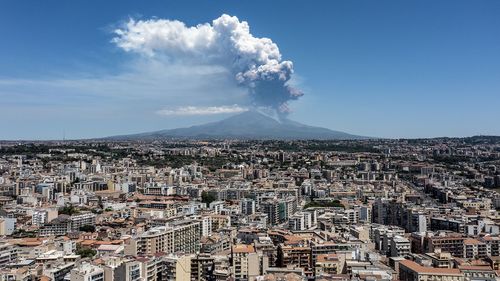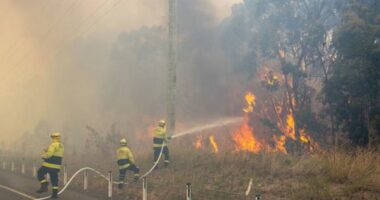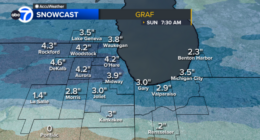Share this @internewscast.com
Footage posted on social media shows long lines of people hurrying downhill away from the explosion on Monday while the owner of one tour company told CNN they had 40 people on the Sicilian volcano when it erupted.
Giuseppe Panfallo, a guide with Go Etna, filmed his tour group huddled together with an enormous ash cloud in the distance.
“We were nearly grazed, look at this cloud here. We were two steps away and thank goodness we have a responsible guide with us,” he says in the video shared with CNN.
“It arrived all at once, an immense smoke, immense, immense roar.”
About a dozen tour operators work on Etna at any given time, the Sicilian Civil Protection Agency told CNN, adding that they are contacting all of them to ensure everyone is accounted for.
The volcano on the Italian island is a popular tourist destination visited by 1.5 million people a year, many of whom trek almost all the way to its summit.
Although Mount Etna is one of the world’s most active volcanos, there hasn’t been an eruption of this magnitude since 2014, according to the National Institute of Geophysics and Volcanology Observatory.
These eruptions often stop as quickly as they start, the observatory added, though explosions were still increasing in intensity and the mountain is spewing out a very small amount of lava and fire.

This eruption, which began on Monday morning (Monday evening AEST), produced explosions heard as far away as Taormina and Catania, which are about 50 kilometres and 40 kilometres away, respectively, according to several witnesses who posted footage on social media.
The observatory said that the preliminary observations show a “partial collapse” of the northern flank of the volcano’s south-east crater, which has produced spectacular lava flows during recent eruptions in the last few months.
None of the ash is expected to fall on Catania, the city at the foot of the volcano, though authorities are prepared to alert people to take cover if the wind changes, the city’s mayor Enrico Tarantino told CNN.
Nearby airports in Catania and Palermo remain open too as, currently, the wind is not blowing the ash in that direction. The Sicilian Civil Protection Agency instructed all flight travel to avoid the area and some flights from Catania have been directed to Palermo, according to Flight Radar Data.

Authorities have closed many of the roads heading up to the volcano to prevent people trying to get close to the eruption and from getting in the way of first responders and emergency vehicles, Tarantino added.
About 1pm local time (9pm AEST), the volcano started spewing hot lava, which is more in line with previous eruptions, an observatory spokesman said.
The observatory defined the volcanic activity as a pyroclastic eruption, resulting in a “significant increase in volcanic tremor and the formation of an eruptive column containing a lethal mixture of high-temperature gases, lava grains, volcanic ash, and rock fragments of various sizes that rapidly descends down the slopes of the volcano”.










